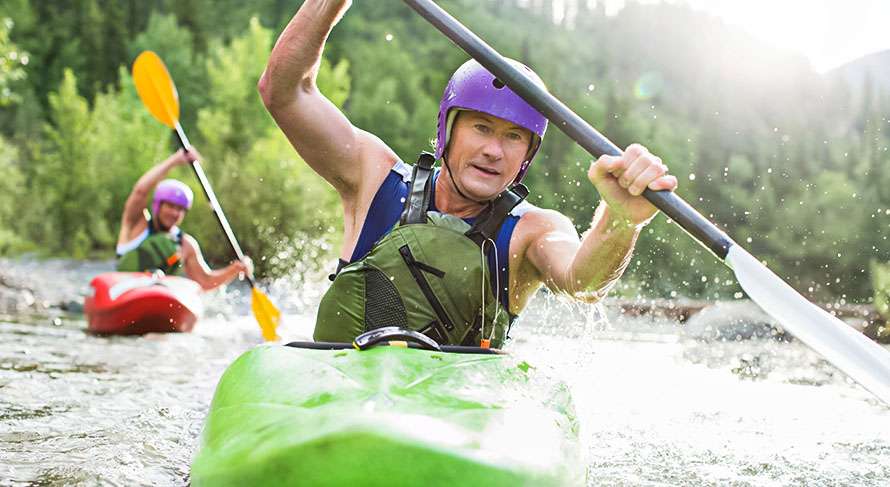Whether you’re in a canoe, kayak or inflatable, getting to shore with gear is not easy, even in mild current. So nearly every paddler welcomes an assist when they swim. But it is not always obvious how to help. Understanding your options will help you make the correct choice.
The first paddler on the scene should approach the swimmer. In the midst of a rapid, the best way to assist is with encouragement or giving directions for an aggressive self-rescue. In the midst of rapids or close to shore clear directions are the best way to help: “Swim this way, keep those feet up. You got it!”
If the swimmer needs an assist with a longer swim, you’ll likely approach the swimmer stern-first. Once he has hold, head for shore. The swimmer helps out by kicking. Tip: Wait until the swimmer has a good grasp. Many newer boats have loops that are difficult to hold. If the swimmer doesn’t kick, you won’t make much progress, so he will often need a gentle reminder.
If you have a long distance to go, and enough size in the stern, get the swimmer up on the back deck. Back deck towing works best with a long boat and cooperative swimmer. Other times you’ll find it works best to get the swimmer on the bow. Most small boats handle better this way, plus you can offer face to face reassurance and directions. Many instructors find this works well in deeper water with a panicked swimmer.
1. Chasing Gear
When someone swims, don’t all crowd around him. As you get into position, look for the job that isn’t being done, then do it. One person gets the swimmer, and the other gets the gear. An efficient rescue can be amazingly quick if everyone is well practiced at the skill.
Sometimes a rescue simply takes longer than expected. If the swimmer starts to drift into a harder rapid, everyone will be safer if you back off. Follow the swimmer and gear through the drop, then try again. Don’t chase gear through a difficult or dangerous drop.
2. Bulldoze or Shove
You can bulldoze a kayak into shore with your bow. Align the boat so the upstream end is pointed slightly towards shore, and push it in, being careful to maintain the angle. Don’t get in the way by getting between the shore and the boat. Sometimes, a big shove can get the boat to shore most efficiently. You’ll usually leave the boat upside down for a shove, bulldoze or tow. Only flip it upright if you are sure you can do so without getting much water inside.
3. Lasso the Paddle
If the swimmer has been taken care of…make sure someone has the paddle. If you have big hands, you can use it together with your own paddle. More likely you will toss it to an eddy or onto shore. Even if it only gets part way to shore, it slows down and will be easier to find.
There are a lot of decisions for a swimmer, and a rescuer, to make. These get easier with experience and practice. Practice in a known rapid that is deep and unobstructed.
4. If You Swim…What Next?
A strong swimmer can often pull off the most efficient rescue of all: an aggressive self-rescue. This is often much faster than waiting for a tow to shore. When you bail-out, you have to make a quick decision: do you hold onto your boat and gear? In more difficult rapids, or with known hazards present, you’ll want to let go of everything and concentrate on avoiding danger spots and getting yourself to shore. If you choose to hold onto your boat, don’t get caught between the boat and a rock.
Move quickly to the upstream end. Usually you will angle yourself and the boat towards shore and swim for an eddy using a sidestroke. Look for a way to help yourself swimming, don’t wait on a rescue! At times you can get your boat to shore with a big shove: flip the boat real quick, from the end, not allowing water in. Then push it to shore, and swim for it. If you’re in big water keep hold of your paddle near the blade. If you are near shore or in a smaller river, toss it into an eddy.

